Maritime Employers: Working to Find Workers
“Each Career Connect Washington program is codeveloped with businesses and educators, so each program we build or expand meets the needs of industry and students.” -Andrew Clemons, Grant Administrator, State of Washington.
In March, the U.S. Joint Office of Energy and Transportation announced a new workforce development webpage – for electric vehicle job opportunities.
A centralized focus, especially from the top, is a big help for an industrial sector looking for tens of thousands of smart and talented people. The Joint Office was asked: any similar federal agency efforts to help build the maritime workforce? Not yet – however, importantly, MARAD is planning to link maritime job opportunities with Department of Labor websites (more below).
Maritime workforce managers might harbor just a bit of envy about the Joint Office push. After all, almost every maritime company’s website has a “join our team” link. Industry experts speak of a “retirement cliff,” a not-to-distant timepoint when older workers retire but younger workers aren’t filling the ranks. The Bureau of Labor Statistics estimates that, from 2022 to 2032, 8,800 water transportation workers will be needed each year, mostly to replace retirees or people leaving the maritime sector.
In the face of these challenges, maritime companies are not just drifting about. Across the U.S. – in coastal, inland waterways and Great Lakes ports – companies are stepping up, partnering with training facilities, forming regional workforce coalitions and establishing in-house apprenticeships. The following is a closer look at some of these workforce initiatives.
Partnership: Fincantieri Shipyards and Northeast Wisconsin Technical College (NWTC)
NWTC has designated maritime training facilities in Marinette and Sturgeon Bay, Wis. The college works closely with Fincantieri Marine Group shipyards. NWTC is a MARAD designated Center of Excellence for Domestic Maritime Workforce Training and Education. The NWTC/Fincantieri relationship dates back to World War II.
In 2022 specialized training for welding and ship/pipefitting started in Sturgeon Bay. In July 2023, the partnership expanded again by increasing classroom and training capacities and extending curricula.
This is training “at scale,” so to speak, about 15,000 people have been enrolled just within the last 13 years. And it seeks to meet important social goals. About 30% of welding students, for example, are Hispanic and 10% are female. Black students comprise about 10%. Those enrollment percentages are higher than the overall minority population percentages within the college’s district.
Meridith Jaeger is Vice President of College Advancement at NWTC, and Jim Draeger is Dean of Corporate Training & Economic Development. In an interview Jaeger and Draeger were asked for their insights about accelerating and expanding maritime workforce training.
They offered the following core ideas:
- Invest in a dedicated space: Think of the classroom as an extension of the shipyard. A dedicated training facility provides the immersive learning experience necessary for mastering the skills needed on the job (NWTC opened its new North Coast Marine Manufacturing Training Center in Marinette in 2011).
- Allow flexibility in scheduling: Recognize the diverse needs of students and provide flexible training schedule to set them up for success. This could include flexible work hours, on-the-job training opportunities, or offer remote learning to ensure accessibility.
- Capitalize on insider knowledge: Recruit instructors with firsthand experience and expertise within the industry. Leverage their insights to enhance the relevance and effectiveness of the training programs.
- Strengthen public and private partnerships: Collaborate with stakeholders such as government agencies, businesses, industry associations, and institutions. These partnerships can offer valuable resources, funding opportunities and access to enrich the training curriculum.
- Always leave room to adapt: Design training programs that are dynamic and adaptable to the evolving needs of industry. Provide customized, skills-based modules that can be adjusted to address emerging trends, technologies and regulatory requirements.
Draeger said NWTC starts with a foundational, five-week basic skills session to identify students’ strengths and interests. Students then move to more specialized skills training.
The biggest employer demand right now is for welders. Other in-demand crafts are pipefitting, ship-fitting and electrical/electronics as well as basic skills such as communication and time management. NWTC plans to add training in robotic welding. Program funding comes from a variety of sources including the Navy and State of Wisconsin workforce development programs.
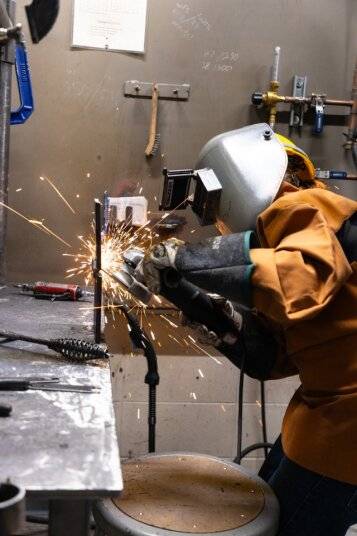 (Credit: NWTC)
(Credit: NWTC)
Jaeger and Draeger were asked: How might maritime execs help expand and facilitate training programs and opportunities?
Jaeger said that with some workforce grants companies can take the initiative on funding and connect with a training partner. Other opportunities differ, however, because not all funds can be accessed by the private sector. Business execs should stay in touch with all parties who can contribute to make an initiative successful.
Wisconsin’s technical college system maintains strong partnerships with industry. “We meet frequently with (shipyard) owners,” Jaeger said, adding “We are constantly looking for opportunities to maintain a strong and varied set of programs.”
Career Connect Washington: A coalition of business, labor, education, government
Andrew Clemons is a grant administrator with the State of Washington’s Employment Security Department (ESD), the agency charged with implementing Career Connect Washington (CCW), which links jobseekers to training. Since 2019, CCW has funded over 150 such programs, many were apprenticeships.
In 2022 the U.S. Department of Labor (DOL), announced Building America apprenticeship funds. Clemons said Washington state officials moved on that opportunity, which, Clemons said, “seemed like a perfect fit for Washington’s workforce needs.” ESD’s applications were successful and new apprenticeship programs in key industries – including maritime – started in the summer of 2022. CCW has received $23.5 million of Good Jobs Challenge funding from the U.S. Department of Commerce and $5.6 million in DOL Apprenticeship Building America funds. “Each CCW program,” Clemons explained, “is codeveloped with businesses and educators, so each program we build or expand meets the needs of industry and students.”
Clemons was asked about scaling up workforce development initiatives to deliver state and regional impacts. He commented that 40% of young adults complete a post-secondary credential or degree but about 70% of current jobs require such a credential. “We need to do more for our maritime workforce,” he said, “and we need solutions to bring career connected learning to scale across industries.” He added, though, with reference to maritime, “I think we have the right pieces in place to make real impact.”
Finally, Clemons was asked how maritime businesses can best be involved in workforce decision-making. He said the coalition has established an office and website called “Sector Leaders,” which serve as employers’ primary points of contact with program development.
“Sector Leaders,” Clemons explained, “work directly with businesses to make sure program offerings meet businesses’ hiring needs and to ensure that our workforce aligns with industry priorities.” Critically, it seeks collaboration and coherency among employers and programs.
There are 10 Sector Leader categories, from advanced manufacturing and aerospace to IT and cybersecurity to maritime, where training and opportunities are headed up by the NW Center of Excellence for Marine Manufacturing and Technology, based in Anacortes, Wash.
In-house training: Gunderson Marine & Iron, Portland, Ore.
Deee Burch is President of Gunderson Marine & Iron. Burch reactivated Gunderson’s training programs in 2023. Welding is a major focus, Burch said, but instructional areas also include rigging, scaffolding, marine electrician and IT. Importantly, students are paid during training.
The program is solely funded by Gunderson. “We have not received external financial assistance from entities like the Department of Labor, MARAD, or state education offices,” Burch said. But to expand training, the company is exploring partnership opportunities. Local career resource centers help with recruiting.
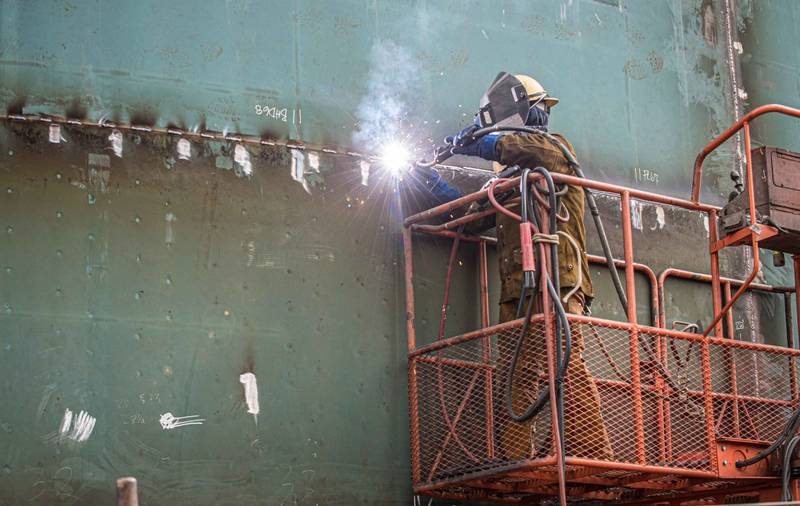 (Credit: Gunderson Marine)
(Credit: Gunderson Marine)
Burch did not disclose program enrollment. Upon completion, students are not required to work for Gunderson although the company is eager to have them stay on.
Burch said graduates have an average 15-year tenure with the company. “They continue to utilize their skills, he added, “demonstrating the incredible work ethic instilled in them through the program.”
Gunderson plans to continue training even after it fills its employee ranks. “We’re facing the trades gap head-on,” Burch commented, and added: “The Training Center is a long-term investment. This is a great opportunity to start a great career and get paid while you learn your chosen profession.”
San Francisco Bay: A new Working Waterfront Coalition
Patrick Murphy is President of the Blue and Gold Fleet, a passenger ferry service at Pier 41 Marine Terminal in San Franciso. For Blue and Gold, Murphy wrote “that workforce recruitment is top of mind for us.” Murphy is working with union halls and workforce development programs in the cities of Richmond and Oakland. “We have put together,” Murphy explained, “a group called the Working Waterfront Coalition to help recruit and train future mariners and shipyard workers.”
The employer-led coalition was established two years ago. Bobby Winston is one of the Coalition’s leaders and owns Bay Crossings, a company that sells ferry tickets in San Francisco's iconic Ferry Building.
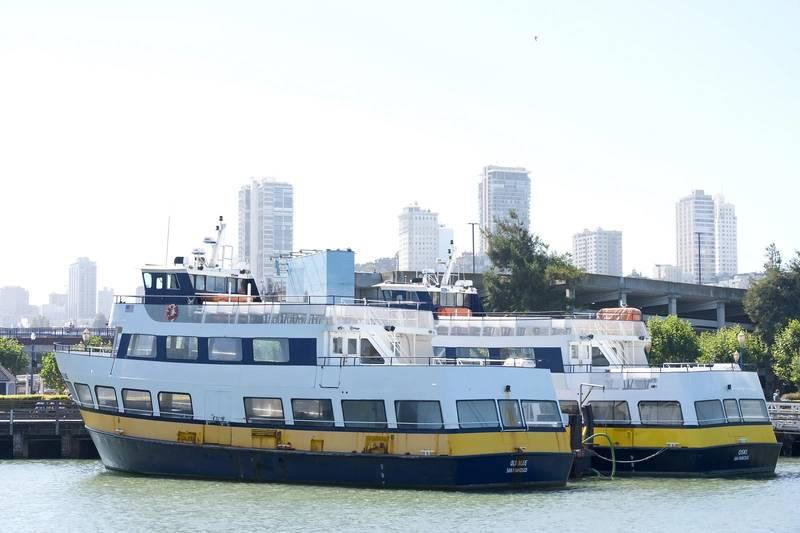 (© sheilaf2002 / Adobe Stock)
(© sheilaf2002 / Adobe Stock)
In a recent presentation to SF’s Water Emergency Transportation Authority Coalition Program Director Sal Vaca outlined some coalition goals. The focus -
- Shipyard and maritime construction jobs, e.g., marine techs, welders, mechanics, shipwrights and electricians; and,
- Water transportation, e.g., deckhands, station agents, captains and captain assistants.
Next steps are linked to California Workforce Accelerator programs. An initial goal is to train 30 participants, then ramping up to 300. Officials seek to leverage workforce training monies that are part of federal and state infrastructure and energy programs, e.g., EPA’s clean ports initiative. The coalition estimates that offshore wind alone, by 2030, will demand between 12,300 and 49,000 full time employees.
The coalition wants short term (8-12 weeks) customized training. It wants to develop and implement a first source hiring agreement. And, of course, it needs to secure the resources to keep everything running. Initial funding efforts have been successful. Winston said the coalition has received $5 million from Workforce Boards, including a grant from California’s High Road Training Partnerships, which supports workforce projects based on “industry partnerships that deliver equity, sustainability and job quality,” according to the state board.
Winston added that in the past, sustaining a maritime workforce was something of a legacy process, linked to family connections and informal networks, or at least living near a port and hearing that work was available.
Now, Winston commented, workforce attraction needs to move beyond those old-school connections. It needs to connect with people otherwise unaware of maritime activities. Winston said potential candidates are put off by security requirements, the time and money required for credentials, getting paid (or not) during training, and, of course, added difficulties for non-English speakers. Winston said social media is critical. He said the coalition, for example, is evaluating how and whether it might use TikTok for recruitment. Young people may indeed be interested in maritime work, Winston said, but on balance, it can be easier to start a career in another job sector.
Port of Tacoma
Tacoma Port operations support more than 40,000 jobs; the port itself employs 250. In 2022 Port directors adopted a new Workforce Development Strategic Plan, with 10 priorities, including –
- Paid internships and payment for work experience;
- Financially supporting a Tacoma Public Schools certification program;
- Community engagement regarding maritime careers; and
- Career exposure in elementary schools.
Last December, port commissioners approved a contract with the training center Workforce Central to expand career pathways through paid work experiences or internships in the areas of building trades, manufacturing trades, maritime and logistics trades, and the environment.
At the time, Port of Tacoma Commission President Kristin Ang commented that “This is an exciting step forward in our commitment to growing the workforce of tomorrow. We want to make sure the people of Pierce County are connected to the opportunities provided by family wage jobs.”
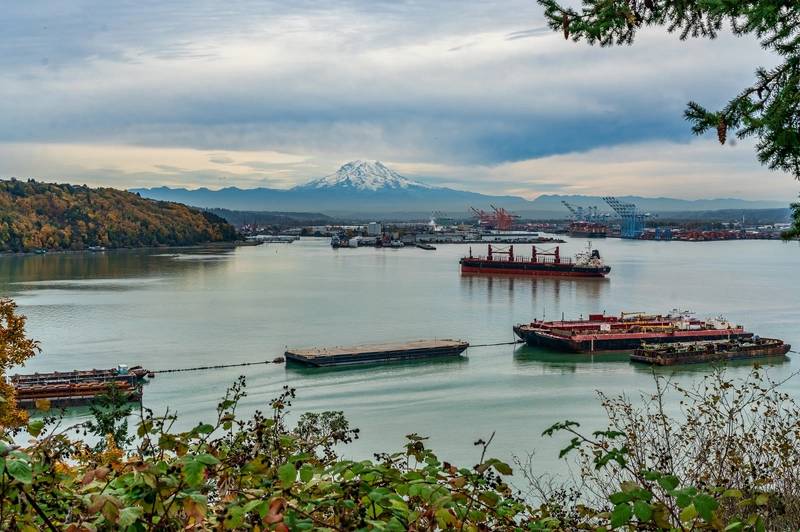 © George Cole / Adobe Stock
© George Cole / Adobe Stock
Another big move for the port is collaborating with the Tacoma Public Schools on a new Port Maritime Center – called “Maritime|253”. Planning is ongoing now with a focus on:
- Skilled and technical trades, with credentials, certificates and apprenticeships in carpentry, electrical, plumbing, sheet metal and masonry;
- Transportation and logistics, covering all aspects of land, sea and air warehousing and logistics. Students can earn certified operator training for working on ships, trains and docks;
- Technology and innovation, including certificates and advanced application in the cyber security, logistic programming, remote operated vehicles and drones (aerial and under water); and,
- Sustainability, including focus on renewable/alternative fuels, waste and emission reduction, material procurement, and retrofitting throughout multiple ecosystems.
At startup in 2024, Workforce Central will place at least nine people in paid internships, and at least 23 trainees will qualify for work experience compensation.
MARAD: Mariner Workforce Strategic Plan FY 2023 to FY 2027
Last August MARAD released a strategic plan to “identify options to help grow our Nation’s mariner workforce.” That’s part of the introductory message from Ann C. Phillips, Maritime Administrator, who comments further that “while some segments of our industry have sufficient personnel to safely crew their vessels, other segments are facing shortages, both acute and chronic.”
The plan has six core goals –
- Strengthen mariner workforce development programs.
- Support mariner education and training institutions.
- Improve mariner workforce diversity, equity, and inclusion.
- Ensure the availability of sufficient skilled mariners for national security.
- Support maritime innovation.
- Ensure superior policy execution and stewardship of resources.
These goals are starting points for a series of strategies that MARAD intends to pursue over the next five years. Altogether, MARAD presents 36 strategy steps: 11 steps for workforce development; eight to support education; six for diversity; five to maintain an adequate workforce; three to support innovation; and three focused on policy execution.
One strategy is to take better advantage of existing Federal resources. MARAD will tie in with the Department of Labor’s WorkforceGPS website. MARAD will work with other stakeholders to develop maritime-specific content for the site.” Another strategy will seek to expand and establish new apprenticeship programs.
Industry partners
For the strategy project, MARAD sought advice from industry partners. Participants included the Lake Carriers Association (LCA) and American Waterways Operators (AWO).
LCA’s top recommendation: increase support for K-12 maritime programs. “Our greatest need,” explained Eric Peace, LCA vice president, “is for entry level unlicensed deck hands and engineers. And we need to increase our visibility with younger students” (Peace is Board Chairman of Argonaut, a nonprofit corporation that promotes maritime and aviation careers at an inner-city Cleveland high school).
Peace said new apprenticeship programs would be beneficial. Another big help: streamline the Coast Guard’s credentialing process, which, Peace said, intimidates and frustrates potential mariners, making it harder – not easier – for a new team to get on board and get to work.
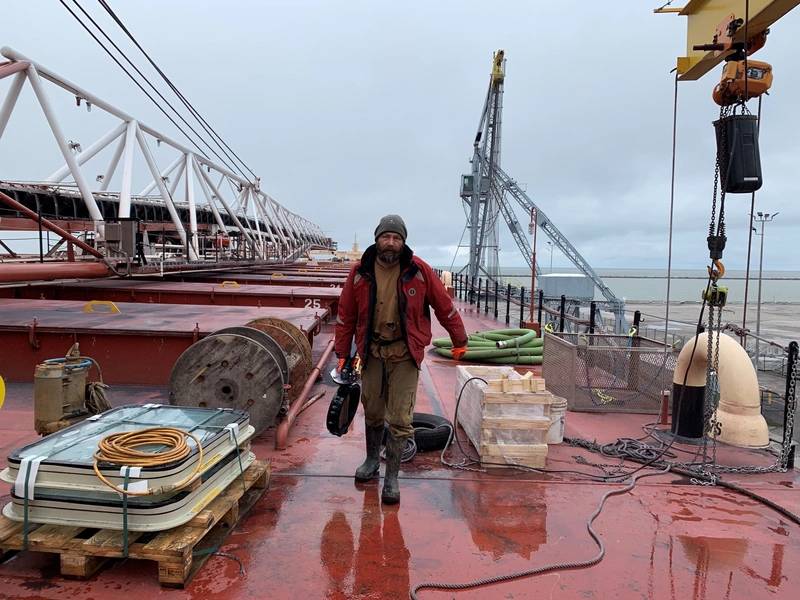 (Credit: LCA)
(Credit: LCA)
Patrick Parsons, Counsel & Director-Government Affairs for The American Waterways Operators, was asked about follow up as MARAD’s strategy starts. He said that “as an overarching goal, AWO wants to ensure that MARAD's work extends across all segments of the domestic maritime industry.” An adequate maritime workforce is a critical element of national security.
Parsons suggested that MARAD's implementation consider numerous maritime career pathways. He noted that many of the plan's goals relate to the maritime academies. But he added that AWO is glad that MARAD “recognizes the critical role of apprenticeship programs, transitioning veterans from military to civilian careers and training schools.”
Parsons said AWO will continue to engage with MARAD to ensure that its work “keeps all options on the table, including the hawsepipe route and company training programs.”



